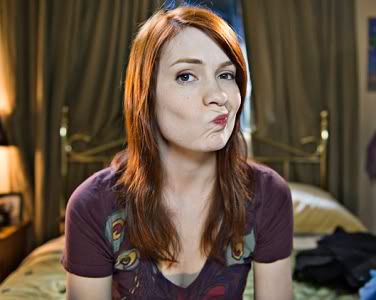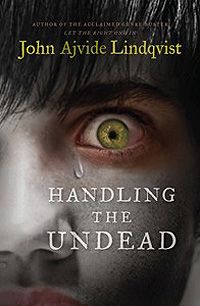
Okay, I’m pretty late coming to this party. And I’m not sure why. I mean, how did I miss out on this little gem when it is written by and stars a Whedon favourite and has gained a huge fan following and won awards for over a couple of years now? Um…er…[looking around sheepishly]
Sooo anyway…
Similar to Joss Whedon’s awesome Dr Horrible’s Sing-along Blog, The Guild is a quirky live-action comedy web series (though not a musical like Dr H) following the misadventures of a group of online gamers who play together in a fantasy world similar to World of Warcraft. The Guild web series has been running for three seasons now with each individual episode being only four to six minutes in length. The main cast is:
Felicia Day (Cyd Sherman/Codex)
Amy Okuda (Tinkerballa)
Jeff Lewis (Vork)
Robin Thorsen (Clara)
Sandeep Parikh (Zaboo)
Vincent Caso (Bladezz)
I gotta say that The Guild reminded me somewhat of Spaced. For like that classic series, this one’s also about a group of motley, maladjusted, geeky characters coming together to help each other fight life’s daily battles, battles which are often surreally magnified for comic effect. Unlike Spaced, though, the backbone for The Guild is the fairly recent world of online gaming. Now I’m not a gamer, online or otherwise, so I don't get the many gaming community in-jokes at play here. But it doesn’t really matter, as that is only one aspect of the show. The wider, more general geekitude of The Guild is something I do understand and do get. It is something common to us geeks in all our many tribes – be we gamers, comic book geeks, Trekkers, Whedonites…whatever!
So, now, lets talk Felicia Day, the creator, writer and star of The Guild. Ah…the lovely and talented Felicia Day. And who pray tell is Felicia Day I hear you ask? She’s not a household name for sure. But within certain online and fandom communities she is a very big name indeed. Prior to The Guild, Felicia co-starred in Joss Whedon’s afore mentioned multi-award winning and hugely popular Doctor Horrible’s Sing-Along Blog alongside Neil Patrick Harris and Nathan Fillion where she played love interest Penny. But Felicia is probably best known (to us geeks anyway) for playing Vi, one of the surviving potential Slayers in the final season of Buffy the Vampire Slayer. She also had a small role in Joss Whedon’s recent Dollhouse, appearing in what was by far its best episode: Epitaph One. In The Guild, as leading lady Cyd Sherman aka Codex, Felicia is spot on. She has a genuinely geeky, gawky, insecure, innocence about her that you just can’t help but find adorable. Each episode of The Guild begins with a brief pre-title of Cyd/Codex talking directly in to her webcam as a way of expressing her innermost thoughts and fears, a kind of personal video blog/confessional. It is a fun framing device, one she will occasionally dip back in to throughout an episode. And Felicia’s deliveries of these little web blogs are masterful. As previously stated, Felicia is also the creator and writer of The Guild. And a great job she does of it too. The characters are well realised and distinctive. And her sharp, witty, sometimes surreal dialogue is often laugh out loud funny. As are the many comedic set pieces she creates with Tinkerballa’s rather…er…dubious babysitting skills being a hilariously bizarre bad taste example. Minding Clara’s twins for an afternoon, the antisocial Tinkerballa basically locks the two toddlers in a small wire cage with a fan aimed directly at them so as to blow the smell of poop away from her. “What? Change them?” she cries in horror while talking online to the rest of the Guild posse about the horrible poop smell. “She never told me I’d have to touch them!”
One of the charming things about Felicia is that, like the character she plays in The Guild, in real life she really, genuinely is an honest-to-god geek. She’s in to computers and online gaming in a big way. She also loves writing and reading – especially sci fi and fantasy. Oh, and did I mention that she’s also a major league hottie? No? Well, she is.
So, in summary, The Guild is great fun. It is witty, sharp, surreal and very geeky. The comedy is perfectly timed and delivered. The rest of the cast is pretty good with a couple of them recognisable from other things. But basically this is Felicia’s show, quite literally. The Guild is her baby and she is the star. She is very funny and very cute and very talented. And The Guild is way better than a lot of the alleged comedies I see on TV. Yes Big Bang Theory I’m looking at you. You have no geekitude you shallow laughter-tracked impostor you. Felicia has geekitude. She has geekitude to spare. Viva la Guild!
A tip. If you want to watch the show then go to the YouTube channel and watch it. For some reason The Guild website edits out all the bad language. The YouTube ones are unedited.
YouTube - Watch The Guild
http://feliciaday.com/
http://www.watchtheguild.com/



